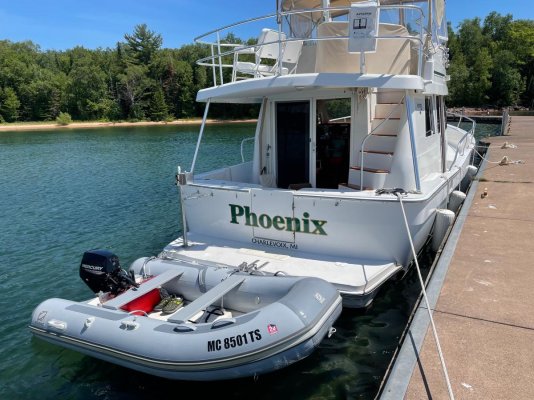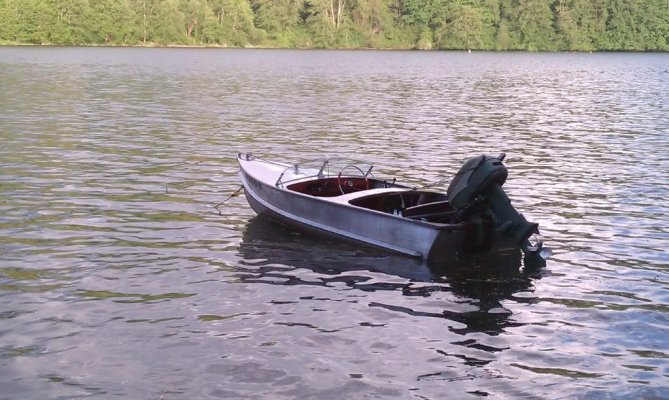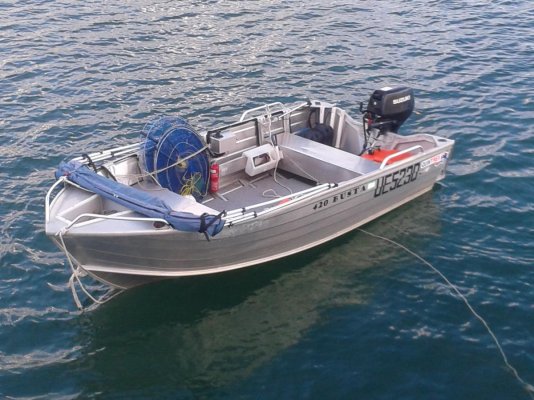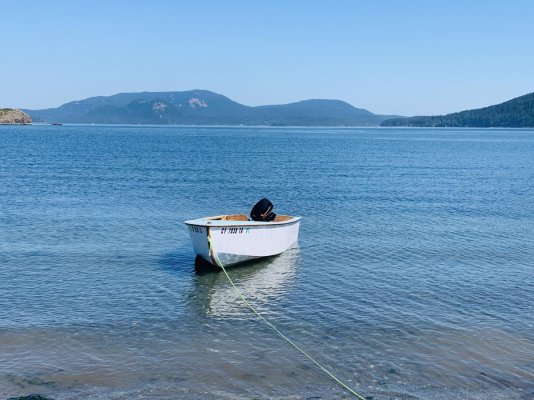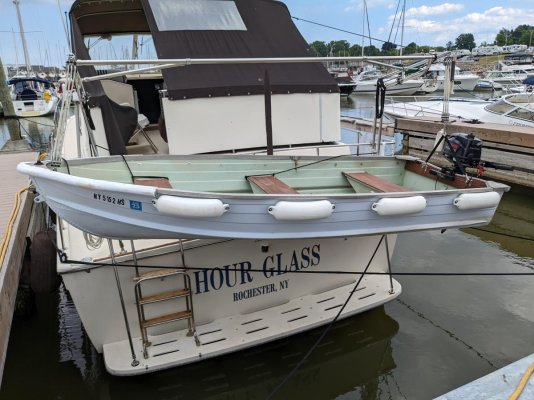mncruiser
Senior Member
We run a 2001 Mainship 390 with the Zodiac that came with the boat. It's an older Hypalon model, and while in decent shape it will need replacement in a few years. I put a Mercury 20 on it in place of the 9.9, and it is quick and pretty efficient. We also have the sea-wise davits which are very nice. Here is a picture of my setup :
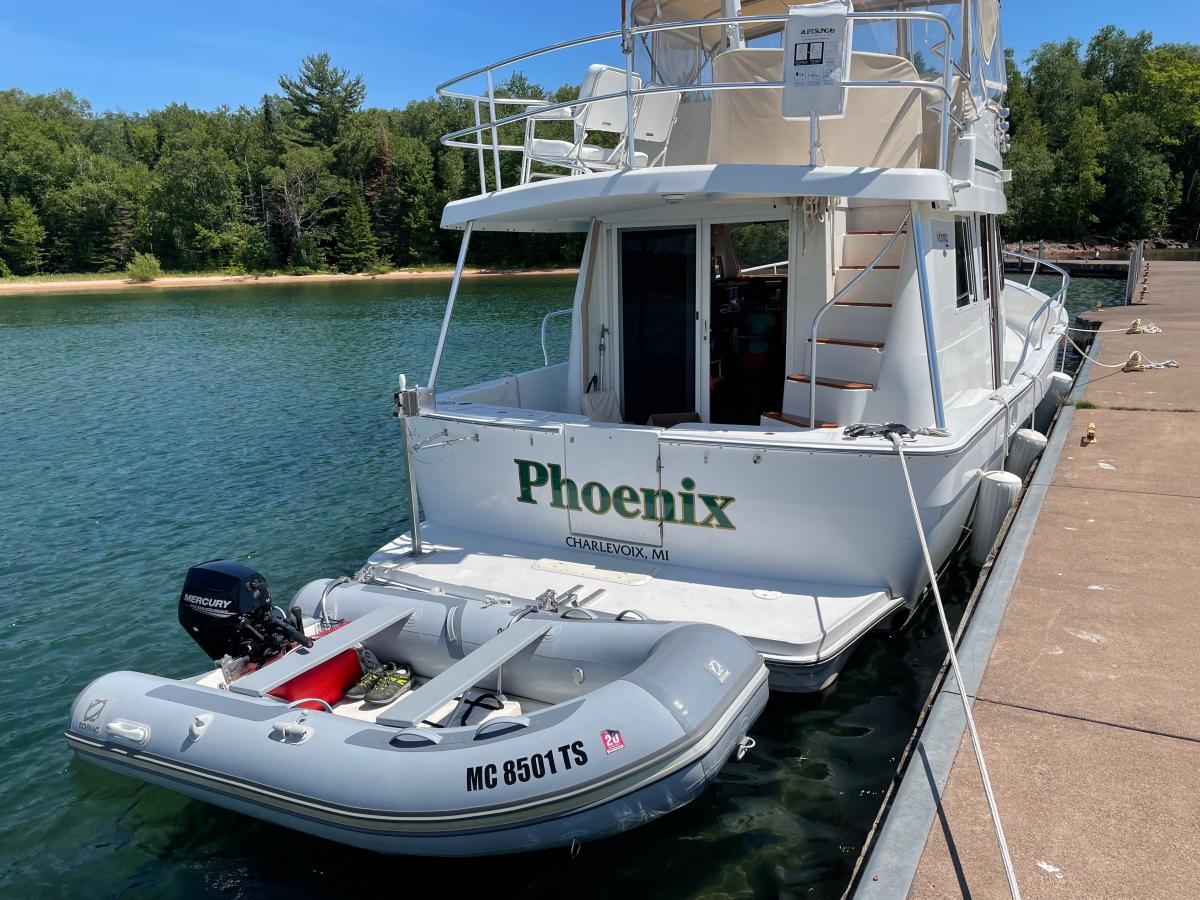
We are Lake Superior boaters, mainly boat around our home port of Bayfield, Wisconsin and the Apostle Islands. Normal load is myself, my wife and 2 kids 8 and 10. There are lots of islands and secret beaches to explore.
I have this idea that I would like a small "hard boat" that we would tow. Something like a Boston Whaler 13 or 15, with a 40 to 60HP outboard. We have decent legs with the existing dinghy, but I find myself wanting something a little larger to take some longer trips with more gear, and be a little more stout crossing parts of the cruising area.
My thought is either not replace the dinghy...or replace with a smaller cheaper dink with a 2hp or even electric motor for strictly ship to shore trips. Then when it makes sense, we tow along the bigger dinghy/boat.
What am I not thinking of? There will surely be more to think about...docking will require some handling of the dinghy alongside or off the stern, or one of the kids or my wife hops in the small boat and takes it in. Most of the places we go we can anchor or dock at park docks, so slip fees not really an issue.
I'd love to hear about your experiences. Thank you!
We are Lake Superior boaters, mainly boat around our home port of Bayfield, Wisconsin and the Apostle Islands. Normal load is myself, my wife and 2 kids 8 and 10. There are lots of islands and secret beaches to explore.
I have this idea that I would like a small "hard boat" that we would tow. Something like a Boston Whaler 13 or 15, with a 40 to 60HP outboard. We have decent legs with the existing dinghy, but I find myself wanting something a little larger to take some longer trips with more gear, and be a little more stout crossing parts of the cruising area.
My thought is either not replace the dinghy...or replace with a smaller cheaper dink with a 2hp or even electric motor for strictly ship to shore trips. Then when it makes sense, we tow along the bigger dinghy/boat.
What am I not thinking of? There will surely be more to think about...docking will require some handling of the dinghy alongside or off the stern, or one of the kids or my wife hops in the small boat and takes it in. Most of the places we go we can anchor or dock at park docks, so slip fees not really an issue.
I'd love to hear about your experiences. Thank you!

